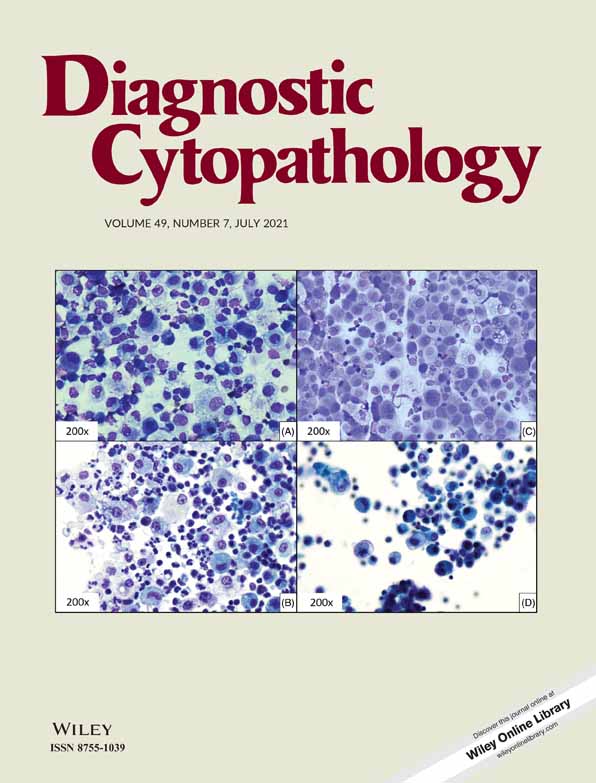Hepatic angiomyolipoma with predominant epithelioid component: Diagnostic clues on aspiration and core needle biopsies
Abstract
Hepatic angiomyolipoma (HAML) is a rare mesenchymal neoplasm that belongs to the perivascular epithelioid tumor family. Though it is characteristically, a triphasic tumor composed of smooth muscle, blood vessels, and adipocytes, the smooth muscle cells are often epithelioid and can represent the near-entirety of the tumor. A HAML composed predominantly of epithelioid smooth muscle cells occurring in the liver presents significant diagnostic challenges as many liver tumors are composed of large epithelioid cells. Furthermore, even if the tumor is not composed predominantly of epithelioid smooth muscle cells, this may be the only component present in a fine-needle aspiration (FNA) or core needle biopsy. A 38-year-old female with a 3 month history of abdominal pain, nausea, and diarrhea was found to have a 12 cm right hepatic lobe mass. FNA biopsy revealed a moderately cellular specimen composed of plump epithelioid cells with indistinct cell borders, low N:C ratio, round to oval nuclei, fine chromatin, occasional nucleoli, and abundant vacuolated to fibrillary cytoplasm. Rare intranuclear inclusions and occasional foamy macrophages were noted. Concurrent core biopsy revealed large polygonal cells with eccentric nuclei and clear, vacuolated to granular, eosinophilic cytoplasm that stained strongly for HMB45, confirming the diagnosis of HAML. Because HAML is a rare tumor, this diagnosis can be easily overlooked; cognizance of the typical cytologic, histologic, and immunophenotypic findings is crucial to establishing a diagnosis.
CONFLICT OF INTEREST
We have no known conflict of interest to disclose.
Open Research
DATA AVAILABILITY STATEMENT
Data sharing is not applicable to this article as no new data were created or analyzed in this study.




